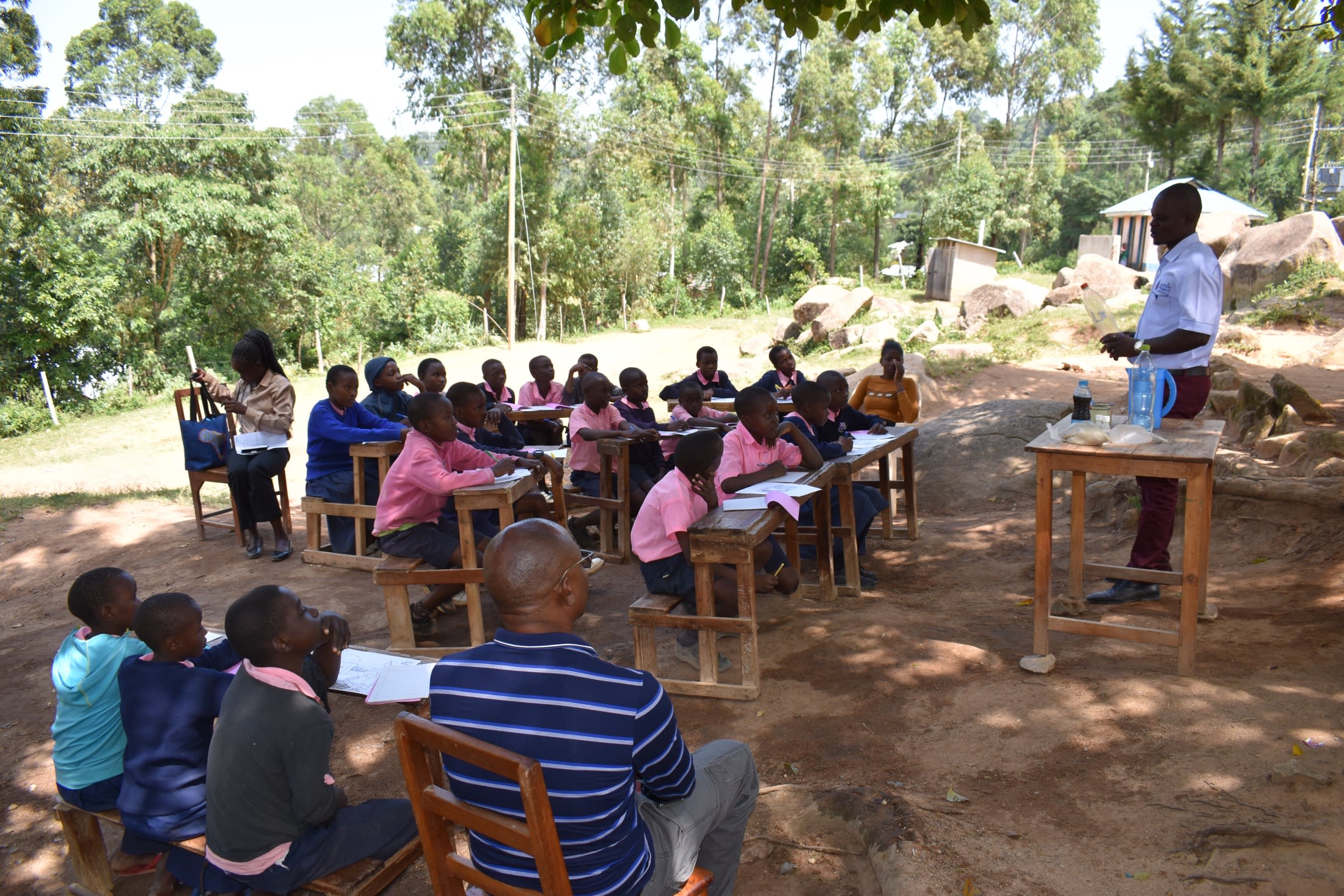The 352 students at Jeviriri Primary School collect water wherever they can find it. Still, the water they manage to collect is never enough and is often contaminated.
There is a rain tank at the school, but it hasn't been cleaned for three years and is in disrepair. Its water is colored, stagnant, and unsafe for drinking. The tank is also too small and seasonal, meaning the water runs out during the dry season, leaving students to fetch water outside the school compound for most of the year.

"Students, on several occasions, abscond [from] classes for fear of being requested to go fetch water. Water from the main source is never trusted as [it] is exposed to contaminants. The school has, on given times, reported cases of infections related to water, and this has always promoted absenteeism in school," said teacher Geoffrey Wekesa (shown below).

Every morning before classes, during break time, and after classes, students walk to the river two kilometers away to collect surface water. But that means they miss valuable learning time, and their academic careers suffer. Sometimes they skip school altogether to avoid the task.

"We are requested to go fetch water every day out of the school compound for use in school when [the] need arises. Valuable time is wasted at the water point, and this has impacted negatively in my studies," said 11-year-old Winning N. (shown below).

The trip to the river is tiring for students, especially when they must return with heavy, full containers of water. And sadly, the water they work so hard to collect cannot be trusted and is making those who consume it ill with water-related illnesses, causing them to miss additional learning time.
“If education is the key to helping children escape poverty, access to water and sanitation is key to helping children safely maximize their education. To neglect this is to be careless with the well-being and health of children," said Kelly Ann Naylor, Global Chief of Water, Sanitation, and Hygiene, UNICEF.
Students need a reliable, safer water source on their school campus so they can return to using their energy for learning instead of collecting water.
What We Can Do:
New Well
We conducted a hydrogeological survey at this school and the results indicated the water table beneath it is an ideal candidate for a borehole well. Due to a borehole well's unique ability to tap into a safe, year-round water column, it will be poised to serve all of the water needs for this school's large population, even through the dry months.
The school will help collect the needed construction materials such as sand, rocks, and water for mixing cement. They will also provide housing and meals for the work team, in addition to providing local laborers. We will complement their materials by providing an expert team of artisans and drilling professionals, tools, hardware, and the hand-pump. Once finished, water from the well will then be used by the school's students and staff for drinking, handwashing, cooking, cleaning, and much more.
Handwashing Stations
The student health club will oversee the two new handwashing stations we will provide, and make sure they are kept clean and in working condition. The club leaders will fill the handwashing stations with water daily and make sure they are always supplied with a cleaning agent such as soap or ash.
VIP Latrines
We will construct two triple-door latrine blocks using local materials that the school will help gather. Three doors will serve the girls and three doors will serve the boys. All of these new latrines will have cement floors that are designed to be easy to use and to clean. And with a borehole right on school property, there should be enough water to keep them clean.
Training on Health, Hygiene, COVID-19, and More
We will hold a one-day intensive training session with students, teachers, and parents. This training will cover a wide range of topics including COVID-19 symptoms, transmission routes, and prevention; personal and environmental hygiene; and the operation and maintenance of the borehole, latrines, and handwashing stations. There will be a special emphasis on handwashing.
Our team of facilitators will use a variety of methods to train, including participatory hygiene and sanitation transformation, and asset-based community development. We will initiate a student health club, which will prepare students to lead other pupils into healthy habits at school and at home. We will also lead lectures, group discussions, and provide illustrative handouts to teach health topics and ways to promote good hygiene practices within the school including handwashing and water treatment. We will then conduct a series of follow-up trainings before transitioning to our regularly scheduled support visits throughout the year.
We and the school strongly believe that all of these components will work together to improve standards at this school, which will help lead to better student academic performance and will help unlock the opportunity for these students to live better, healthier lives.





 Borehole Well and Hand Pump
Borehole Well and Hand Pump
 Rehabilitation Project
Rehabilitation Project
































